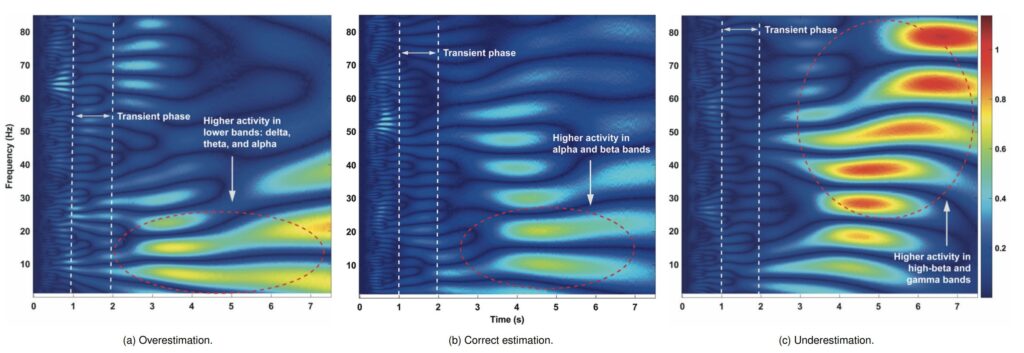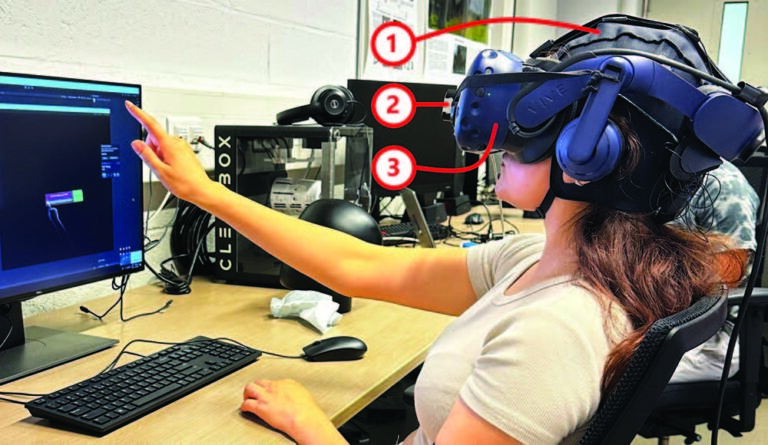

Even if you can measure time, our perception of it is influenced by many different factors such as emotions, motivation, or physical sensations (eg, sounds, images, touch). When bored, time can feel like it’s slowing down, whereas when having fun at the Schueberfouer, it can feel too short.
What else changes our time perception?
Studies in psychology showed that the more engaged you are, the faster time goes. But time flies also when you have too many tasks, when you’re stressed, or when you’re simply focused. On the other hand, time seems to stretch when the tasks are repetitive or not stimulating enough.
What if we can use these findings to our advantage and control time so it goes faster during class but slower during school exams.
ChronoPilot is a research project led by Dr. Jean Botev. Researchers want to create a wearable device that can extend or compress the user’s sense of time using multisensory stimulation (visual, auditory, and tactile feedback).
The product will monitor the user’s level of stress, boredom, and focus using tools such as EEG, ECG, and eye tracking (eg, the activity of your brain, your heart, and the way your eyes are moving). The data will then be fed into an AI that can adjust the user’s time perception according to the required output (slowing down or increasing time perception). In other words, the device will (for example) change the music you’re listening to, add images or objects in your field of vision, or send vibrations in your hand to make you feel that time is slowing down or, on the contrary, moving faster.
This multidisciplinary research project combines cognitive science, psychology, computer science, and sensor technology.
This ongoing research project still has many experiments to conduct. One of their findings is to be able to evaluate how a user is perceiving time without asking. They found that there is a specific brain signature for overestimation, correct estimation, or underestimation of time. Would this signature change if the conditions of each task were different?

The experiment consisted of participants doing a series of tasks and evaluating the time they spent on each task. Their brain activity was monitored with an (1) EEG cap (ElectroEncephaloGraph cap), and the movements of their hands were tracked with a (2) hand-tracking device on the front of the (3) VR headset.

They then changed the conditions of each task. For example, to evaluate the impact of emotions on time perception, the participants were shown 4 images that would induce a specific emotion, and were then asked to say how much time these images were displayed.
Or, to evaluate the impact of the task’s difficulty on time perception, participants had to count the number of balls in an image with increasing difficulty and then assess the time they spent on each task.
Researchers also evaluated the impact of an oddball, magnitude, and expectation.
They found that the brain signatures of time estimation were independent of the tasks. ChronoPilot can therefore use these brain signatures to adapt the experience of the user according to the needs (slowing or increasing time perception).
This is the first step towards understanding and deploying this innovative technology. Researchers still need to answer many questions. For example, what happens to your time perception if the same stimulus is constantly repeated? Will it still have the same effect, or will it lose it or even have the opposite effect? And what happens if you combine different stimuli?
Time perception is also very individual; the same stimulus may have different effects on different people. To tackle this question, researchers are working on training individual AI to adapt to your own stimulus response. ChronoPilot will therefore be able to predict your stress response, for example, and react accordingly. No matter how, this device will be totally controlled by its user, so one can turn it on or off whenever one decides to.
The research highlights the potential for applications that improve productivity, well-being, creativity, and safety by making time perception a modifiable, user-centred variable rather than a fixed constant. For example, in stressful conditions, giving you the perception that you have enough time to take a decision will help you make better decisions.
Copyright © Université du Luxembourg 2025. All rights reserved.